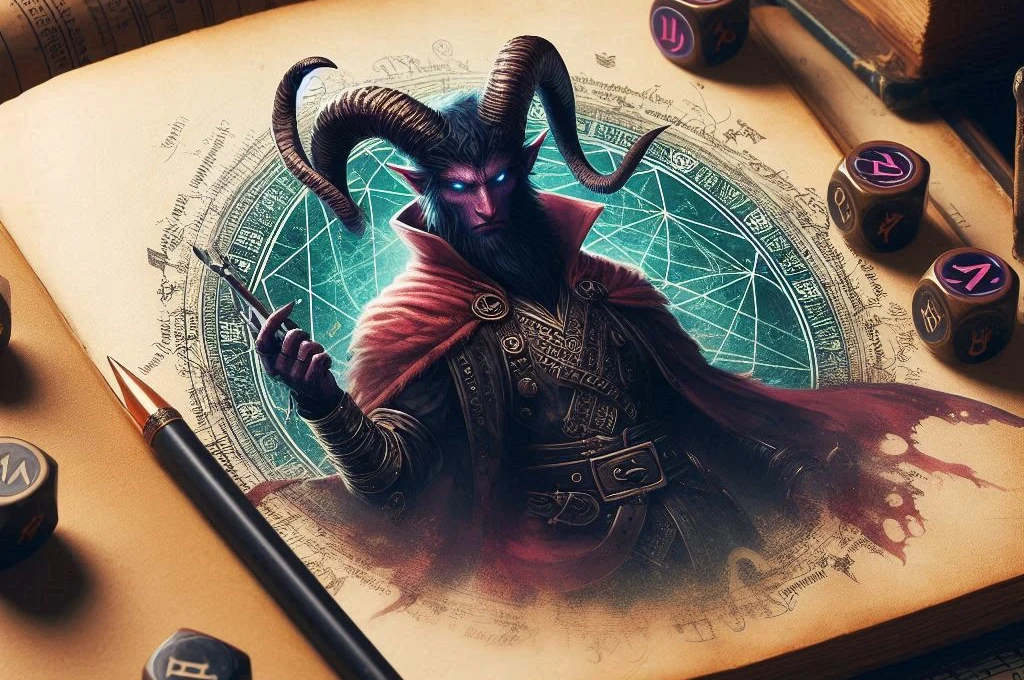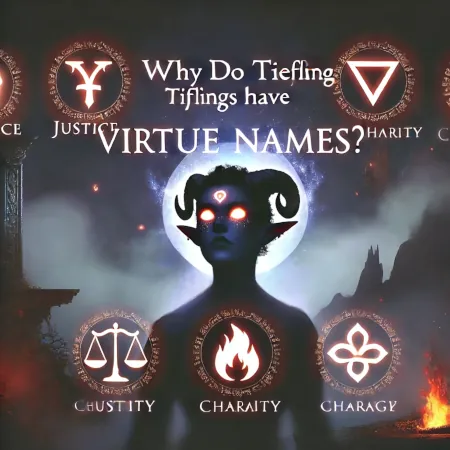Tieflings are a popular race in Dungeons & Dragons, known for their infernal heritage and striking physical features. When creating a Tiefling character, one important element to consider is their name. In this guide, we’ll explain how Tiefling names work, how to choose the perfect name for your character, and why it matters in gameplay. We’ll also cover different types of Tiefling names and provide you with helpful tips, including the use of a Tiefling name generator.
What Makes Tiefling Names Unique?
Tiefling names are influenced by their fiendish ancestry, which often reflects the complex, mystical nature of these creatures. Unlike common human names, Tiefling names carry a sense of mystery and power, often having both infernal and cultural significance.
When selecting a Tiefling name, keep in mind the following factors:
- Fiendish Origins: Many Tiefling names have infernal roots, referencing demons, devils, and other dark entities.
- Cultural Influence: While some Tiefling names are demonic, others reflect the diverse cultures and regions where Tieflings are born.
- Gender Differences: Tiefling names can vary by gender, just like human names. However, it’s important to note that the naming conventions might not strictly follow gender norms.

Male Tiefling Names vs. Female Tiefling Names
While there is no set rule for male or female Tiefling names, there are some common trends that may help you choose a name based on your character’s gender.
- Male Tiefling Names often have strong, sharp sounds, with harsh consonants like “Z,” “K,” or “V.” These names might reflect a commanding or aggressive nature.
- Female Tiefling Names often sound more melodic and fluid, though they can still be quite powerful. Names like “Seraphine” or “Azura” carry elegance and strength.
However, remember that names can be fluid, and it’s ultimately up to you to decide the tone you want to convey with your character’s name.
Types of Tiefling Names
There are many different types of Tiefling names, each with a unique origin and meaning. These names often reflect the varied backgrounds of Tieflings, who are descended from many different infernal beings. Here are a few examples of Tiefling name types:
- Demonic Names: These names come from the infernal realms and are often harsh and guttural. Examples include “Kornak,” “Thraxx,” and “Lazara.”
- Devilish Names: Slightly more refined than demonic names, these names are often elegant yet still carry an air of menace. Examples include “Amara,” “Zephirus,” and “Ireth.”
- Cultural Names: Some Tieflings adopt names from the cultures they live in, especially if they are raised by humans or other non-fiendish races. Examples could include “Alaric,” “Elira,” and “Thalindra.”
Tips for Choosing the Perfect Tiefling Name
Here are a few tips to help you pick a name that fits your character’s background, personality, and heritage:
- Think About the Character’s Backstory: A Tiefling raised in a human city might have a more human-sounding name, while one raised in the hellish planes may have a name rooted in demonic lore.
- Use a Tiefling Name Generator: If you’re struggling to come up with a name, a Tiefling name generator can provide inspiration based on the race, gender, and even personality traits of your character.
- Consider Meaning: Tiefling names often have meanings that reflect their heritage. A name like “Azazel” could mean “Fallen Angel” or “Fiery Demon,” providing depth to your character.
Why Do Tiefling Names Matter?
In D&D, a character’s name isn’t just a label. It can reveal information about their history, culture, and personality. The right Tiefling name can enhance the role-playing experience, helping you create a more immersive character.
Additionally, a unique and memorable name can help your character stand out in the minds of other players, making your role-playing moments even more impactful.
How to Use a Tiefling Name Generator?
If you’re stuck or just want to explore more options, a Tiefling name generator is a great tool. These generators provide random names based on different traits, such as gender, culture, and background, giving you a wide variety of names to choose from. Here’s how to use one:
- Enter the Required Information: Most generators will ask for basic details like gender and origin. Some might even let you select a personality trait.
- Generate Names: Click the button to generate a list of names. Browse through the options to find one that suits your character.
- Customize the Name: If you find a name you like but want to tweak it, you can often modify it to better fit your character’s identity.
Final Thoughts on How Do Tiefling Names Work
Understanding how Tiefling names work adds another layer of depth to your D&D role-playing experience. Whether you’re choosing a name for a male Tiefling or a female Tiefling, consider the infernal heritage, cultural influences, and your character’s backstory. By carefully choosing the right name, you can create a memorable and immersive character that stands out in your campaign.


